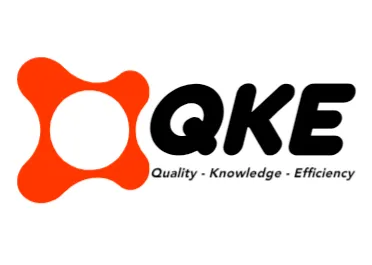Downloading labels to your device involves selecting the appropriate label type and ensuring software compatibility. Choose a label template that suits your product and brand, then prepare your system by meeting hardware and software requirements. Follow step-by-step instructions to customize and download your labels, addressing any troubleshooting issues along the way. With these insights, you’re ready to explore further and master the process.
Key Points
- Select a label creation platform and choose a suitable template for customization.
- Customize labels with essential information such as addresses and barcodes.
- Download labels in a common format like PDF for easy access and use.
- Preview downloaded labels to ensure accurate information and error-free formatting.
- Adjust printer settings to meet label design requirements before printing.
Understanding Label Types and Software Options

Understanding different label types and software options is crucial for selecting the most suitable labeling solution for specific needs.
Label material options range from cost-effective paper labels, suitable for indoor use, to more durable synthetic materials like polypropylene, offering moisture resistance and adhesion. Thermal transfer printing, recognized for its glossy, sharp print surface created by melted ribbons, provides long-term image stability and resistance to heat and moisture, making it ideal for high-quality archival labels in various applications. Additionally, modular solutions offered by advanced labeling machines enhance compatibility with various label materials, enabling businesses to adapt efficiently to changing production requirements.
Software compatibility plays a vital role in ensuring selected label materials can be used effectively with existing systems, thereby optimizing the labeling process.
Choosing a Template That Fits Your Needs

Factors to consider when selecting a label template begin with the label size, ensuring compatibility with the product packaging’s dimensions and shape.
Design elements must align with brand identity, reflecting the product’s characteristics and market positioning.
Material choice is critical for durability and regulatory compliance, especially in challenging environments.
Alignment with brand identity in template design is essential, incorporating logos, colors, and fonts consistent with the brand image.
Regulatory requirements must be considered, with templates providing sufficient space for mandatory product information.
Choosing the right template is a multifaceted decision, balancing aesthetic appeal with practical considerations. Additionally, understanding labeling speed capabilities can help you select the best template to match your production capacity and operational needs.
Preparing Your System for Label Download

Before downloading labels, ensuring your system meets all hardware and software requirements is essential. Proper system configuration ensures smooth operation and optimal performance in label printing tasks.
The following key components impact the system’s ability to handle label downloading and printing:
System prerequisites for seamless label downloading and printing include a compatible operating system, robust processor, sufficient RAM, and adequate storage, ensuring optimal performance.
- Operating System: Compatibility with both desktop and server versions of Windows is crucial, with specific versions like Windows 10, 11, and Windows Server 2016, 2019, or 2022 being optimal.
- Processor (CPU): Requires an Intel or compatible x86 processor. For intensive tasks like variable data printing, a quad-core or higher processor is recommended.
- Memory (RAM): A minimum of 2 GB to 4 GB of RAM is required. For more demanding operations, 8 GB to 16 GB or more is recommended.
- Storage: A minimum of 1 GB to 5 GB of disk space is needed for software installation, with 20 GB or more recommended for additional data storage. SSD storage provides better performance.
Additionally, investing in a semi-automatic labeling machine can optimize your operations by increasing efficiency and reducing time spent on manual tasks.
Step-by-Step Label Download Guide

Once the system is ready for label downloading, the next step involves accessing the chosen label creation platform. This could be a carrier’s website, an e-commerce platform, or third-party software.
Users select a label template, customize it with necessary information like addresses and barcodes, then initiate the download, typically in PDF format. Before printing, it’s critical to preview the label to check for formatting errors.
Ensuring printer settings align with the label design requirements is a key printing tip. Finally, the label file should be stored in an easily accessible location for reprinting if needed. Additionally, implementing an automatic labeling machine can significantly improve labeling efficiency and accuracy during production.
Troubleshooting Common Download Issues

Several common issues can hinder successful label downloading to your device. To address these, consider the following troubleshooting steps:
- Connection Issues: Verify network settings and cable connections. Ensure the device is properly connected to power and the correct network, and check for any physical damage to cables.
- Driver Issues: Update or reinstall drivers if they are outdated or corrupted. Ensure drivers are compatible with the operating system and label printing software.
- File Integrity: Confirm the label file is not corrupted and is in the correct format for the software. Redownload the file if necessary.
- Software Compatibility: Check for software updates and compatibility with the operating system. Use the correct template formats and ensure the software supports the label file type.

 Tiếng Việt
Tiếng Việt 日本語
日本語 中文 (中国)
中文 (中国) 한국어
한국어
